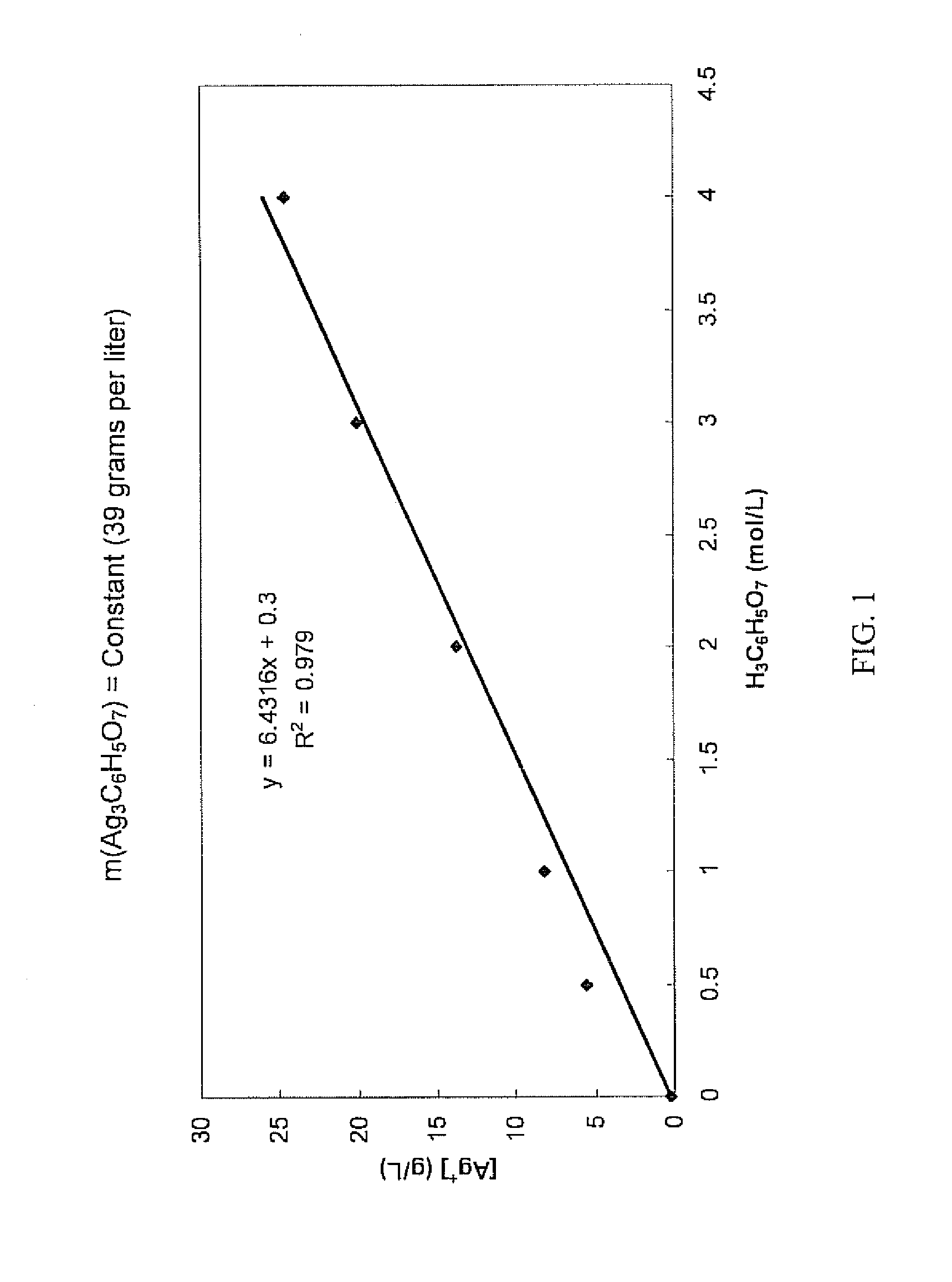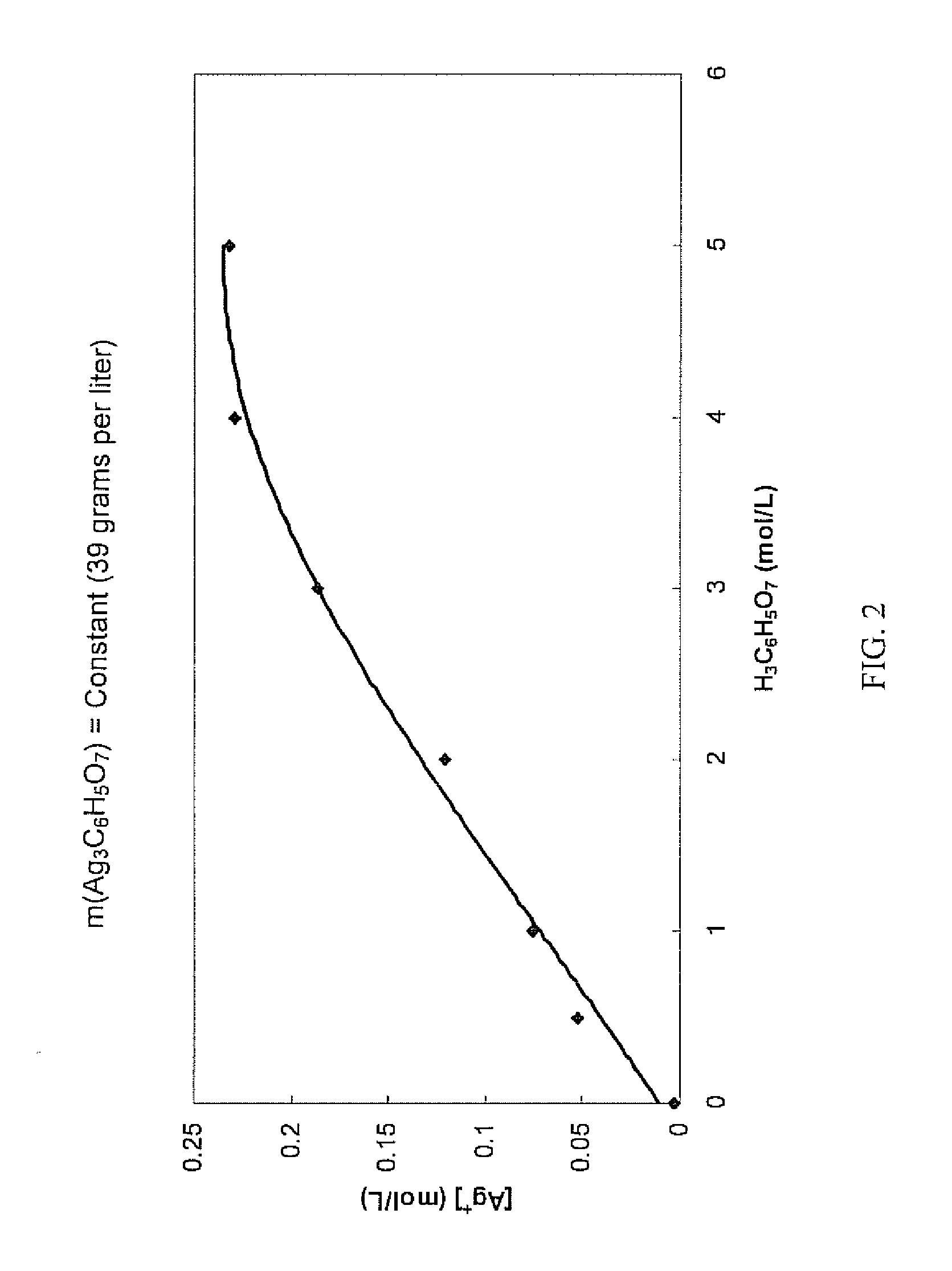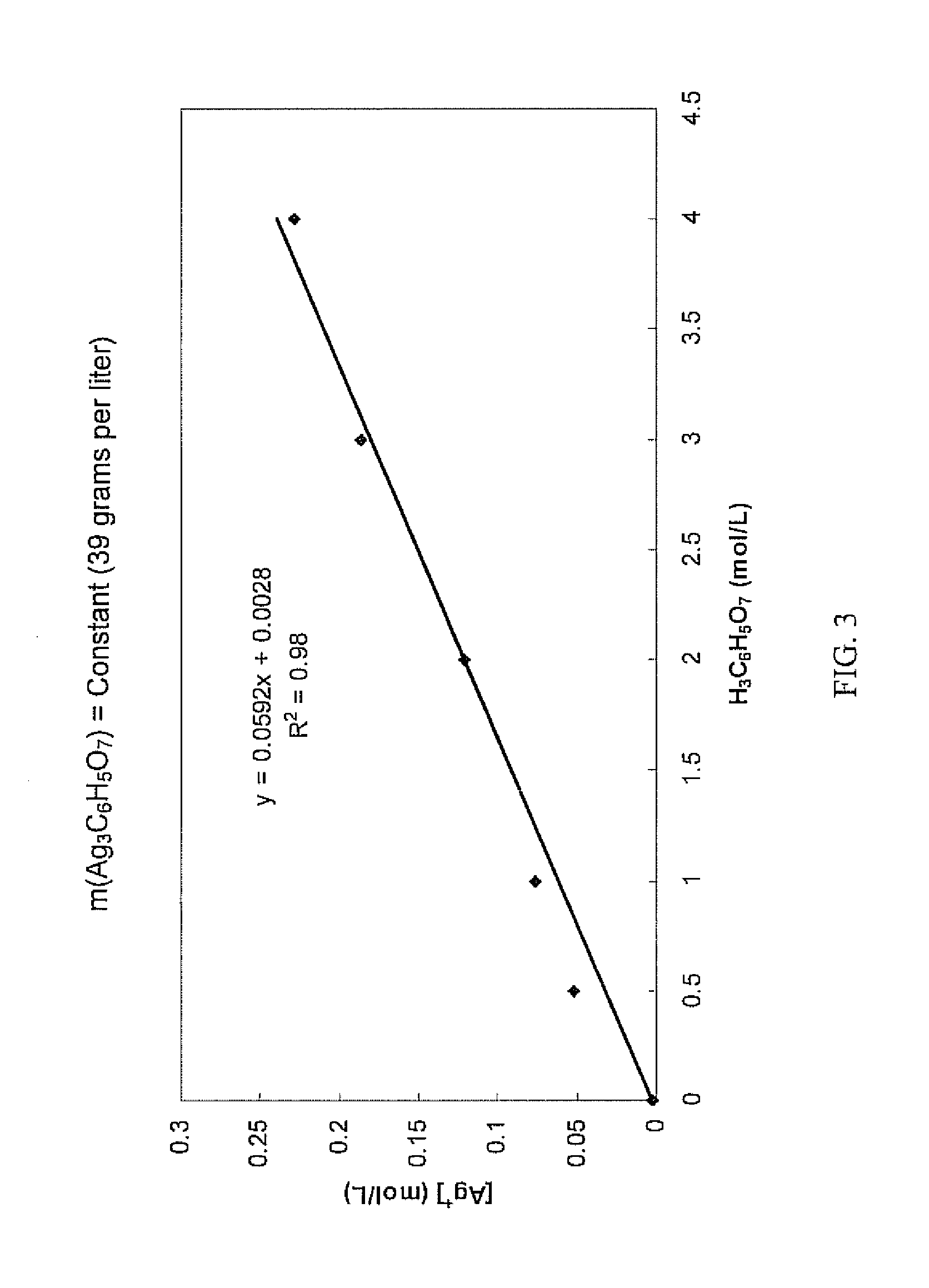Antimicrobial silver solutions
a technology of antimicrobial silver and silver solution, which is applied in the field of antimicrobial silver solution, to achieve the effect of facilitating the production of concentrated solution, reducing and improving the stability of concentrated solution and/or diluted solution having silver ions
- Summary
- Abstract
- Description
- Claims
- Application Information
AI Technical Summary
Benefits of technology
Problems solved by technology
Method used
Image
Examples
example 1
[0164]7.6849 grams of silver nitrate (AgNO3) (i.e., containing about 4.88 grams of silver ions) were dissolved in 100 mL of reverse osmosis (RO) purified water. To this solution 10 mL of 28% by volume sodium hydroxide (NaOH) solution was added. After precipitation of a dark brown silver oxide (Ag2O) precipitate occurred, the slurry was mixed for another 20 minutes. The slurry was left to allow the brown silver oxide precipitate to settle and a clear colorless solution was then decanted. The brown silver oxide precipitate was then carefully rinsed with reverse osmosis water until the pH of the washing solution was about 7. After the washing step, a solution of 155 grams of solid citric acid (H3C6H5O7) dissolved in 100 mL of reverse osmosis (RO) purified water (i.e., about 1550 grams per liter, about 8 moles per liter, or about 61% by weight) was added to the wet brown silver oxide precipitate. Upon the addition of the highly concentrated citric acid solution the color of the precipit...
example 2
[0167]Starting with 7.8651 grams of silver nitrate (AgNO3) (i.e., containing about 4.99 grams of silver ions), an aqueous clear colorless solution containing only silver ions and citrate ions was obtained in the manner as described in Example 1. 35 mL of glycerol (C3H5(OH)3) were added to this solution and the solution was diluted exactly to 250 mL to provide a concentrated solution which contained about 620 grams per liter of citric acid (i.e., about 3 moles per liter or about 38% by weight).
[0168]Chemical analysis of the concentrated solution found that the silver ion concentration was 18.96 grams per liter (i.e., a total of about 4.74 grams of silver ions in the concentrated solution), showing that about 5.1% of the silver ions contained in the silver nitrate were lost during the process.
[0169]Furthermore, the concentrated solution was relatively stable over a period of three months. Some formation of crystals at the bottom of the container was observed. Importantly, the silver i...
example 3
[0170]7.8614 grams of silver nitrate (AgNO3) (i.e., containing about 4.99 grams of silver ions) were dissolved in 100 mL of reverse osmosis (RO) purified water. To this solution 7 mL of 28% by volume ammonium hydroxide (NH4OH) solution was added to obtain a clear colorless solution containing silver diamino complex [Ag(NH3)2]+. When a clear colorless solution was obtained, a solution of 155 grams of solid citric acid (H3C6H5O7) dissolved in 100 mL of reverse osmosis (RO) purified water (i.e., about 1550 grams per liter, about 8 moles per liter, or about 61% by weight) was added to the silver diamino complex solution at room temperature. Initially, a formation of white silver citrate (Ag3C6H5O7) precipitate was observed, which dissolved upon heating of the solution to about 50° C.-60° C. While the solution was being heated, 35 mL of glycerol as a stabilizing agent was mixed with the solution and the temperature of 50° C.-60° C. was maintained for the next 10 minutes. The solution was...
PUM
 Login to View More
Login to View More Abstract
Description
Claims
Application Information
 Login to View More
Login to View More - R&D
- Intellectual Property
- Life Sciences
- Materials
- Tech Scout
- Unparalleled Data Quality
- Higher Quality Content
- 60% Fewer Hallucinations
Browse by: Latest US Patents, China's latest patents, Technical Efficacy Thesaurus, Application Domain, Technology Topic, Popular Technical Reports.
© 2025 PatSnap. All rights reserved.Legal|Privacy policy|Modern Slavery Act Transparency Statement|Sitemap|About US| Contact US: help@patsnap.com



